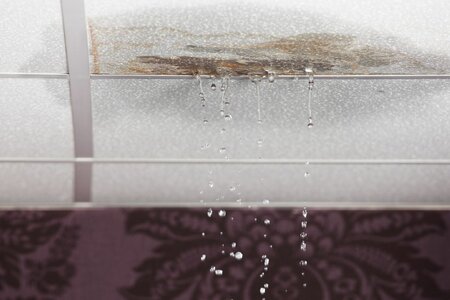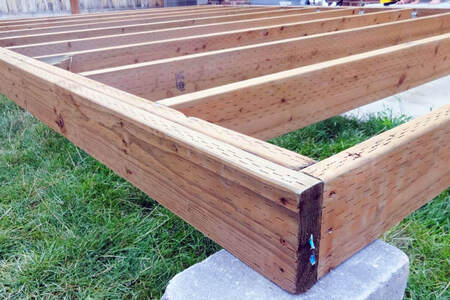![2023 12 Roof Leak Roof Leak]()
A leaking roof can cause serious and expensive damage if left unaddressed. Unfortunately, roof leaks are not always obvious until irreparable harm is done. That’s why it’s important to be proactive and routinely inspect your roof and home interior for any signs of water infiltration.
This prevents small leaks from becoming big problems down the road.
In this guide, we’ll cover what warning signs to look for during attic, exterior, and indoor inspections so you can identify issues early and take quick action. Learn how to spot the telltale indicators that your roof needs costly repairs to protect your most valuable asset - your home.
Signs Your Roof is Leaking
A leak in your entire roof can manifest in several ways if water is infiltrating your home. The most obvious sign is visible water stains on ceilings or exterior walls, typically with warped or crumbling drywall around the edges.
![2023 12 Intermittent Roof Leak Intermittent Roof Leak]()
Peeling interior paint, recurring mould, and mildew growth can also indicate moisture issues. In the attic, look for damp insulation, watermarks on rafters, and wet spots around roof vents and skylights.
Outside, missing, cracked, or curled shingles and worn roof flashing should prompt further inspection. If you observe any of these warning signs, it’s best to contact a professional roofer right away to locate and repair the leak before major roof damage is done.
During an Attic Inspection
Your attic is one of the best places to spot early signs of a roof leak. This is where water will initially drip through from above. Conduct an attic inspection at least twice a year and after major storms.
Check for Water Stains
Carefully examine the attic ceiling and exterior wall for any water stains or moisture damage. Look for swollen or warped areas of drywall or wood, staining around nails, and crumbling or flaking paint. These are clear signs that water has infiltrated from the roof above. The size and location of the ceiling stain may help identify the leak site.
![2023 12 Attic Leak Attic Leak]()
Look for Leaks Around Vents or Skylights
Pay close attention to vents, skylights or light fixtures, chimneys, and roof penetrations. It begins with soffit vents that inhale outside air—necessary to create an airflow that moves warm attic air out the roof vents. The flashing and seals around these can deteriorate over time, allowing water intrusion. Signs include rusty flashing, water trails on walls, or wet insulation around the edges. Leaks here are common culprits.
Assess Attic Insulation and Rafters
Check for any insulation that is soaked, clumped or sagging. Rafters, joists and roof’s framing may have moisture damage like warps, cracks or stains. Probe with an awl to find spongy spots. Have an insulation pro assess if replacement is needed. Also note any drips from nails, pipes or wires.
Inside Your Home
In addition to the attic, be attentive to signs of a roof leak within the living spaces of your home. Dripping water can travel along rafters and down walls, causing damage.
Be on Alert for Water Spots on Ceilings
Look for any water stains or moisture on ceiling surfaces, likely indicating an active leak. Stains may appear darker, discoloured, or bubbling. Feel for dampness and poke with a knife to check if water is trapped within. Make a note of affected areas and watch for spreading.
![2023 12 Inside Leak Leak]()
Inspect Walls and Paint for Bubbles or Cracks
Scan walls near the ceiling for water damage, too. Look for peeling, cracking, or bubbling paint and drywall. This results when water seeps in and breaks the adhesion. Also, check for moisture behind wall hangings or furniture.
Note Any New Mould or Mildew Growth
Evidence of mould or mildew growth on interior walls, ceilings or insulation can signify water intrusion from the roof. This spread can be minor at first but quickly escalate if underlying leaks aren’t addressed promptly.
Outside Overview
It’s important to visually inspect the exterior of your roof as well since many leaks originate outside. Schedule biannual roof checkups or inspect after major weather events.
Scan for Missing, Cracked or Curled Shingles
Do a thorough scan for any missing, cracked, split, curled or otherwise damaged shingles. Also, look for areas where shingles have blown off. This can allow water intrusion. Focus on the roof edges and field.
![2023 12 Roof Outside Leak Roof Leak]()
Examine Roof Flashing Areas
Pay close attention to roof flashing around chimneys, vents, valleys and joints. Cracked, rusted, or deteriorated flashing can permit leaks. Signs include rust trails, water stains, and raised seams. Ensure the flashing is sealed down tightly.
Look for Granule Buildup in Gutters
Check your gutters and downspouts for debris and moisture buildup like shingle granules. This “roof sand” often washes down from leaking areas. Note where the accumulation is worst; it may pinpoint leak locations above. Signs of water damage may show on the fascia behind rusted gutters.
Next Steps if You Suspect a Leak
If your attic, interior, or exterior inspections reveal signs of possible water infiltration, take action quickly to prevent further damage. Contact a reputable local roofer to come and perform a more thorough leak investigation.
![2023 12 Roof Is Leaking Roof Leaking]()
They have the expertise to pinpoint problem areas and remedy the issue through repairs or full roof replacement if needed. They can also check for unseen structural damage and advise on your roof system’s condition.
Don’t delay - unfixed leaks can lead to mould growth, rot, destroyed insulation and other expensive repairs. Addressing problems promptly when first detected will limit damage and cost over the long run.
Frequently Asked Questions
What are the most common signs of a roof leak inside my home?
Some of the most telling interior signs of a roof leak include water stains or damp spots on ceilings, peeling or bubbling paint and drywall, and any evidence of moisture damage like warped wood. New mould or mildew growth may also indicate water is infiltrating from above.
How often should I inspect my roof for potential leaks?
It’s a good idea to visually inspect your roof at least twice per year, ideally in spring and fall. Additionally, inspect the interior of your attic and home for leak signs any time you notice something amiss, like a water spot. Catching leaks quickly can prevent costly structural damage.
Stay Vigilant to Preserve Your Roof’s Condition
Being vigilant about spotting potential roof leaks is key to protecting your home in Australia, where the weather can be harsh. If your inspections reveal any troubling signs like ceiling stains, missing or damaged shingles or interior mould growth, contact the pros at Final Touch Carpentry and Construction straight away.
Our experienced local team has the specialised knowledge to identify and repair any roof leak issues that arise accurately. We aim to partner with Aussie homeowners to maintain the integrity of your most valuable asset - your home.
Get in touch for a thorough inspection or roof evaluation today. We’re ready to stop leaks in their tracks and prevent further destruction. Don’t delay essential repairs and risk costly structural harm down the line. Our quality roofing services will expertly restore the waterproofing of your roof so you can relax during rainstorms.








